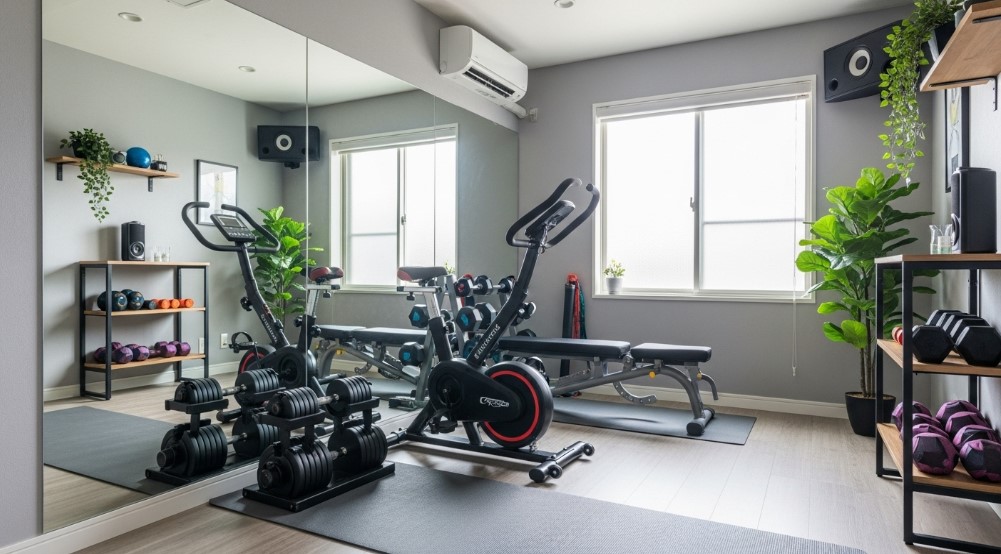Setting up a personal workout area at home is a game-changer, especially if you’re dealing with limited space. Home gym essentials for small spaces make it possible to build strength, improve endurance, and stay consistent with your fitness goals—right in the comfort of your own home.
As someone passionate about helping others reach their full fitness potential, I want to share what I’ve learned from years of training in both large and small spaces. Even if you live in a small apartment or have just a corner of a room available, you can build a fully functional home gym that meets your needs.
Let’s dive into the best home gym essentials for small spaces that will transform your fitness routine.
With busy schedules and increasing work-from-home lifestyles, many of us don’t always have time to hit the gym. Having home gym essentials for small spaces allows you to work out whenever it fits your day, without commuting or waiting for equipment.
Plus, you save on monthly memberships, and you have the freedom to exercise in privacy and comfort.
If you’re serious about building a small but mighty home gym, let’s go over the key equipment to make it happen.

Here’s a breakdown of the most effective, space-saving equipment that should be part of your setup:
Adjustable dumbbells are one of the most versatile home gym essentials for small spaces. Instead of needing a whole rack of weights, you can have one pair that adjusts to multiple weight levels. This allows you to perform strength training exercises without cluttering your room.
Benefits of Adjustable Dumbbells:
Resistance bands are another must-have in any collection of home gym essentials for small spaces. They are lightweight, easy to store, and provide incredible resistance for strength and mobility exercises.
Great uses for resistance bands:
A foldable workout bench is perfect for those who want variety in their strength routines but don’t have a lot of room to spare. You can easily fold it up and tuck it under your bed or behind a door after your workout.
A yoga mat is one of the most basic home gym essentials for small spaces but incredibly effective. It provides cushioning for floor exercises, yoga, stretching, and even bodyweight training.
Uses of a Yoga Mat:
Suspension trainers use your body weight to build strength, flexibility, and core stability. They can be attached to doors or anchored securely to walls, making them ideal home gym essentials for small spaces.
Why use a suspension trainer?
Jump ropes are excellent for cardio, coordination, and overall conditioning. They take up virtually no space, and a quick 10-minute session can get your heart pumping.
If you’re looking for cardio options, compact machines like folding treadmills, mini steppers, or under-desk bikes are ideal home gym essentials for small spaces. Many of these fold away or slide under furniture when not in use.
Building a home gym in a small space isn’t just about equipment. It’s also about smart organization and maximizing every inch you have. Here’s how:
For more ideas on designing small spaces efficiently, HGTV shares great storage solutions that can also help you organize your home gym better.
Having home gym essentials for small spaces isn’t just about convenience. Here are some incredible advantages:
Having the right home gym essentials for small spaces sets the foundation, but working with fitness professionals can accelerate your progress. If you’re ready to get serious, consider booking one-on-one personal training to get expert guidance tailored to your space and goals.
We also offer semi-private personal training if you want accountability and encouragement alongside others working towards their fitness goals.
Need help with your nutrition as you work out from home? Our nutrition coaching services can help optimize your results.
Building your fitness journey starts with the right setup. With these home gym essentials for small spaces, you can stay fit, strong, and motivated—no matter how small your workout area may be.
Let’s make fitness work for you, no matter where you are.